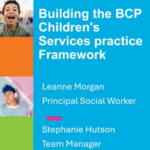The Youth Justice Board’s plans for new panels to identify children
at risk of offending have come under fire from children’s charities
and human rights organisations.
Critics fear that the plans to target children as young as eight
could result in the age of criminal responsibility being lowered,
children being “labelled” from a young age and families being
discouraged from co-operating with agencies that offer help.
Board chairperson Lord Warner outlined the proposals at a youth
justice conference held last week by the Association of Chief
Police Officers. “We need to ensure that a prevention strategy is
directed at early intervention with those young people most at risk
of becoming offenders or more serious offenders,” Warner told
delegates. “We need to respond before offending behaviour has fully
developed or escalated into serious offending.”
Warner announced that 10 multi-agency youth inclusion and support
panels would be introduced in high-level street crime areas. They
would be comprised of experts from youth offending teams, social
services, education, the police and the health service and would
jointly identify eight to 13-year-olds who displayed problematic
behaviour.
Those children may be at risk of offending through drug misuse,
mental health problems, anti-social behaviour or family issues and
would be referred to the panel with their families. Attendance
would be voluntary. The panel aims to direct the child and family
into mainstream services and provide key workers to offer dedicated
help to those who most need it.
Warner said the Association of Chief Police Officers was among the
parties drawing up an information-sharing protocol on those at risk
of offending. This would be “a powerful tool for the agencies
involved to identify those at risk of offending and to help prevent
crime in the future”.
The scheme – a joint initiative between the board, the government’s
children and young people’s unit, both of which fund it, and the
Association of Chief Police Officers – will be piloted in the next
six months. Details of funding and the targeted areas will be
announced soon. But Warner said chancellor Gordon Brown’s spending
review announcement that 25 per cent of the expanded Children’s
Fund should be spent on youth crime prevention “provides a huge
opportunity to implement and prioritise prevention work”.
The children and young people’s unit has already unveiled its
preventive strategy, an information sharing system for at-risk
children, known as Identification, Referral and Tracking. Minister
for young people John Denham announced last month that local
authorities, the health service, police and key criminal justice
agencies would agree local strategies for next year.
“Essential parts of the strategy will be effective systems to
identify children and families needing support, to exchange
information between agencies and track the progress through agency
referrals,” Denham said.
The strategy is being piloted in six authorities until next year
and the unit will consider how best to proceed from there.
Once identified as at-risk, the children may be referred to various
areas for support, one of which will be the new panels.
The idea behind the scheme originates from other projects. One is
run by Barnardo’s in Blackpool, but the children’s charity is
“extremely concerned” about the plans linking support so closely to
the criminal justice system. Says Barnardo’s principal policy
officer Pam Hibbert: “We are faced with the abhorrent possibility
of 11- and 12-year-old children being held in prison department
custody.”
The age of criminal responsibility in England is 10, but the
charity fears the proposals “will result in a de facto lowering of
the age to eight”. It believes that because in law a child younger
than 10 cannot be deemed to have committed an offence, even
behaviour that gives cause for concern should be dealt with in a
way that puts the child’s welfare first.
The concerns are echoed by the Children’s Society. Sharon Moore,
principal policy and practice manager, says the charity welcomes
the idea of support for children identified as at risk of
offending. “But we are deeply concerned that plans for crime
prevention panels could lead to the age of criminal responsibility
being lowered through the back door,” she says.
Earlier this month, the United Nations said the UK was labelling
10-year-old children as criminals (news analysis, page 20, 31
October), yet Moore says Warner’s proposals would result in even
younger children being dealt with by the criminal justice
system.
Human rights groups have also raised concerns. “There are obvious
dangers in creating a database that tags young people as
‘pre-criminals’,” says Roger Bingham, spokesperson for civil
liberties group Liberty. “Will it mean young people being targeted
by the police in future years?”
Families may also be more reluctant to co-operate with social
services and police for fear of children being labelled “future
criminals”.
Warner acknowledges that there is some controversy over the
proposals, especially over the labelling of children. He told the
conference that the board believed the move would in fact do the
opposite.
“These young people, by definition, will be well known to the
relevant agencies in one form or another,” he said. “The panels
will be about intervening early so that as they grow up these young
people are no longer labelled by the community or the agencies as
problem children.” In his experience, many families would have
welcomed early support with their children before problems
escalated.
But the proposals are backed by the National Children’s Bureau.
Chief executive Paul Ennals says Warner was trying to strike the
right balance. “We must move forward fast and introduce better
preventive measures,” Ennals says.
Children’s agencies had been calling for police, social services
and education to work together to improve communication as there is
not an effective, joined-up mechanism in place, he says. “It would
be perverse to criticise it now.”
Rehabilitation agency Nacro also acknowledges the benefits of the
panels. “Children going through difficulties and their families can
often benefit from supportive intervention from state agencies and
appropriate charities,” a spokesperson says.
“But this should be on the basis of their welfare needs, not
because they might be the potential criminal of the future. Many
children and young people commit crime or are disruptive as they
grow up. Few of these grow into the career criminals of popular
imagination.”
Brian Harrison-Jennings, general secretary of the Association of
Educational Psychologists, says the scheme is intended with the
best possible motive. Even so, he has reservations. He agrees with
Bingham and Moore that it is likely children identified as at risk
will be labelled with a code name in the way that children with a
special educational needs statement can be referred to as
“statemented”.
“The problem with Lord Warner’s approach is that children are being
identified for negative reasons, for being troublesome,” he says.
There is a danger that, after identification, children may try to
live up to the reputation they have acquired. The child could then
be excluded from school and end up in a pupil referral unit, coming
into contact with like-minded pupils. They will have a reputation
as “hard” and may suffer psychological damage.
This sort of intervention can, Harrison-Jennings says, “exacerbate
rather than improve” the situation. He says if intervention and
support began at birth it would be seen as the norm and problems
could be targeted before the child is eight.
This should include easily accessible parenting classes for parents
who experience difficulties. “What is needed is early intervention
of a positive nature with a view to preventive work,” he says.



 Bournemouth, Christchurch and Poole
Bournemouth, Christchurch and Poole  Hampshire County Council
Hampshire County Council  Oxfordshire County Council
Oxfordshire County Council  South Gloucestershire Council
South Gloucestershire Council  Wokingham Borough Council
Wokingham Borough Council  Embedding learning in social work teams through a multi-agency approach
Embedding learning in social work teams through a multi-agency approach  The family safeguarding approach: 5 years on
The family safeguarding approach: 5 years on  Harnessing social work values to shape your career pathway
Harnessing social work values to shape your career pathway  Webinar: building a practice framework with the influence of practitioner voice
Webinar: building a practice framework with the influence of practitioner voice  Workforce Insights – showcasing a selection of the sector’s top recruiters
Workforce Insights – showcasing a selection of the sector’s top recruiters  Free CPD on Parkinson’s for health and social care staff
Free CPD on Parkinson’s for health and social care staff 

 Facebook
Facebook X
X LinkedIn
LinkedIn Instagram
Instagram
Comments are closed.